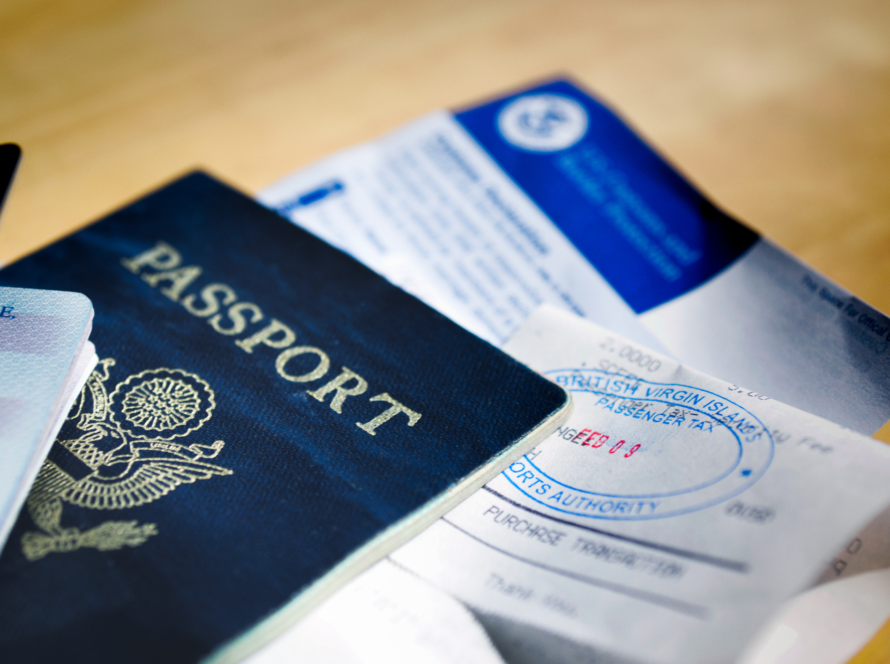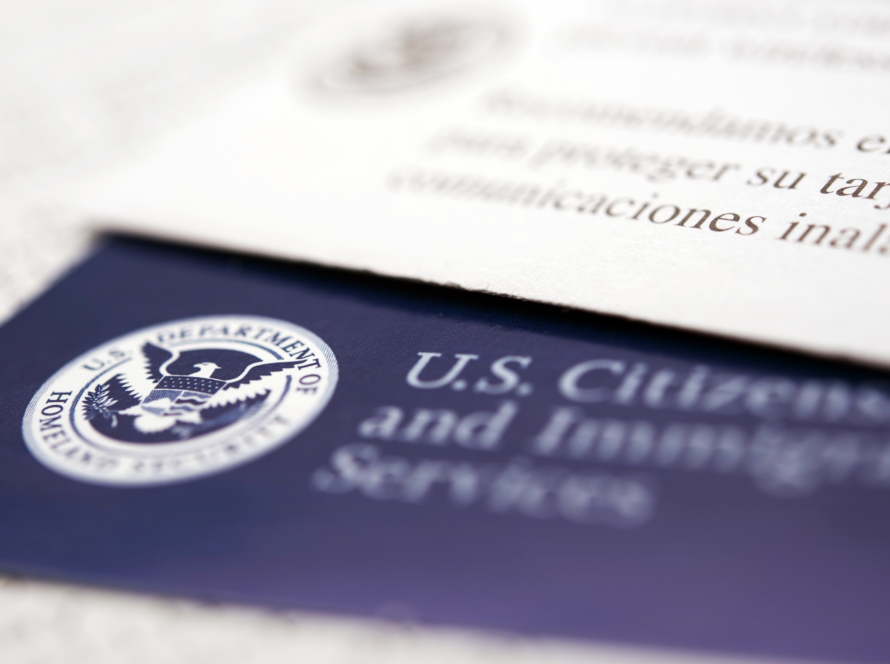
The decision to wait for a green card under the EB-2 category depends largely on individual circumstances, including career goals, immigration priorities, and current visa options. For many, waiting for the EB 2 green card is worth it due to the long-term benefits of permanent residency and employment flexibility in the United States.
However, waiting times can vary significantly based on factors like country of origin and visa bulletin movement, which might affect whether the wait aligns with one’s personal or professional timeline. Understanding these variables helps determine if patience will pay off or if alternative pathways should be considered.
Careful evaluation of the risks and rewards associated with the EB-2 waiting process ensures a more informed approach to immigration planning. This article explores these factors in detail to support readers in making clear decisions.
Key Takeaways
- Wait times for EB 2 green cards vary by country and impact the decision to wait.
- Permanent residency under EB-2 offers significant long-term benefits.
- Alternatives may be necessary if the EB-2 wait time is too long.
Understanding the EB 2 Green Card Process
The EB-2 green card route requires specific qualifications and involves multiple steps. Applicants should be aware of the eligibility rules, the procedural phases, and the typical processing times when deciding whether to wait.
Eligibility Criteria for EB-2
The EB-2 category is for professionals with advanced degrees or individuals with exceptional ability in sciences, arts, or business.
To qualify, applicants must have:
- A U.S. advanced degree or a foreign equivalent, or
- Exceptional ability demonstrated through official documentation.
Exceptional ability means a degree of expertise significantly above that ordinarily encountered.
Additionally, most EB-2 applicants require a permanent job offer and labor certification from the U.S. Department of Labor, except for those applying under a National Interest Waiver (NIW), which waives the job offer requirement.
Steps Involved in EB-2 Application
The EB-2 application typically follows three main stages:
- Labor Certification (PERM) – The employer tests the U.S. labor market to prove no able, willing, qualified U.S. workers are available for the position.
- Immigrant Petition (Form I-140) – Filed by the employer or the applicant (for NIW), confirming eligibility and job offer if required.
- Adjustment of Status (Form I-485) or Consular Processing – Applicants apply to adjust to permanent resident status within the U.S. or apply through a U.S. consulate abroad.
Each step requires specific documentation and submission of fees.
Processing Times in EB-2 Category
Processing times vary by applicant country and USCIS service center.
- Labor Certification: Typically 6-9 months.
- I-140 Petition: 6-8 months under normal processing; 15 calendar days with premium processing (additional fee).
- Adjustment of Status or Consular Processing: Can take 8-14 months depending on the applicant’s location and visa bulletin availability.
Applicants from countries with higher demand, such as India or China, may face longer waits due to visa backlogs.
Factors Influencing the Decision to Wait
The decision to wait for an EB-2 green card depends on multiple specific factors that impact both timing and feasibility. These include current visa availability, the applicant’s country of birth, and how backlog trends evolve.
Priority Dates and Visa Bulletin
Priority dates determine when a foreign national can file for adjustment of status or apply for an immigrant visa under the EB-2 category. The Visa Bulletin, published monthly by the U.S. Department of State, tracks these dates.
Applicants must monitor the “Dates for Filing” and “Final Action Dates” sections carefully. If their priority date is earlier than the date listed in the bulletin, they can proceed with their application. Longer wait times occur if their priority date remains “unavailable.”
Changes in the Visa Bulletin can be unpredictable, influenced by visa demand and annual quotas. A swift movement in priority dates may shorten wait times, while retrogression can delay the process further.
Country of Birth Impact
An applicant’s country of birth significantly affects wait times due to country-specific limits under U.S. immigration law. Countries like India and China generally face longer backlogs because of higher demand.
For example, Indian applicants often wait several years longer than those from countries with less demand. This disparity derives from the per-country cap of 7% per fiscal year on visa allocations.
Applicants from countries without heavy backlogs usually experience faster green card approval times, making waiting a more viable option. Conversely, for high-demand countries, the length of the backlog can influence whether pursuing alternatives is advisable.
Changing Backlogs Over Time
Backlogs in the EB-2 category can shift due to changes in application volume, USCIS processing speeds, and legislative adjustments. In some years, backlogs have grown as demand exceeded supply.
Processing times also vary depending on the service center and applicant’s case specifics. Improvement in processing infrastructure can reduce wait times even if visa number availability stays constant.
Applicants should consider current backlog trends rather than static historical data. Those who monitor these trends regularly can make better-informed choices about waiting or seeking alternative immigration options.
Benefits of Waiting for an EB-2 Green Card
Waiting for an EB-2 green card offers important advantages related to legal residency, work options, and family inclusion. These benefits support stability and long-term planning for applicants and their dependents.
Pathway to U.S. Permanent Residency
An approved EB-2 green card petition leads directly to lawful permanent residency in the United States. This status permits indefinite residence with fewer restrictions compared to temporary visas.
Permanent residents can apply for U.S. citizenship after meeting residency requirements, generally five years. This pathway is a clear route to securing long-term status without needing repeated visa renewals.
EB-2 priority workers often have a faster processing time than other categories, depending on their country of chargeability, which influences their wait duration before adjustment of status.
Work and Travel Flexibility
Green card holders under EB-2 receive unrestricted work authorization. They can change employers or roles without seeking new visa sponsorship, which is not possible on most work visas.
Travel in and out of the U.S. is less complicated with permanent residency. Green card holders do not need additional travel permits and can return after extended trips abroad.
This flexibility reduces the risk of visa-related interruptions and allows for career advancement and personal mobility with fewer legal hurdles.
Family Member Inclusion
The EB-2 green card allows spouses and unmarried children under 21 to obtain derivative green cards. This secures lawful permanent residency for immediate family members.
Family members can also work and study in the U.S. without separate visa sponsorship. This facilitates family stability and integration during the transition to permanent residency.
Dependents included on the EB-2 application gain the same travel rights as the primary applicant, ensuring unified family mobility.
Potential Downsides and Risks of Waiting
Waiting for a green card in the EB2 category involves specific challenges that can affect timelines, job security, and future planning. These challenges include administrative delays, potential shifts in immigration policy, and instability related to employment and visa status.
Delays Due to Administrative Backlogs
Administrative backlogs at USCIS and the Department of State are a common cause of extended waiting times. Processing delays can stretch from months to several years, often depending on the applicant’s country of chargeability.
These backlogs are influenced by demand, limited resources, and periodic procedural changes. Applicants from countries with high demand, such as India or China, typically face longer waits due to per-country limits on visa numbers.
Such delays may affect an applicant’s ability to plan for relocation, family arrangements, or career progression. The variability of processing times complicates effective timeline estimation.
Risk of Policy Changes Affecting Timelines
Immigration policies can change, impacting the EB2 process or visa availability. Regulatory shifts or legislative changes may alter priority dates, application procedures, or country-specific limits.
Policy changes are unpredictable. If new restrictions are introduced or quotas are adjusted, applicants already in the queue might experience additional delays or altered requirements.
Changes could also affect eligibility criteria or documentation standards, requiring applicants to submit new evidence or revise their petitions. This can increase processing time and uncertainty.
Alternative Immigration Options to EB-2
Several immigration pathways exist outside the EB-2 category that may suit individuals depending on their qualifications and urgency. These options include different employment-based green card categories, temporary visa routes, and choices between processing methods.
Other Employment-Based Green Card Categories
Besides EB-2, candidates can consider EB-1, EB-3, or EB-5 categories. EB-1 is for individuals with extraordinary ability, outstanding professors, or multinational executives. It often has faster processing due to higher priority but requires substantial evidence of achievement.
EB-3 covers skilled workers, professionals, and other workers with less stringent requirements than EB-2 but usually faces longer waiting times. EB-5 is an investor visa that grants permanent residency based on a qualifying investment in a U.S. business and job creation.
Choosing the right category depends on education, work experience, and sometimes the timing of visa bulletin availability.
Non-Immigrant Visa Alternatives
Non-immigrant visas can serve as temporary solutions while waiting for a green card. Common options include H-1B for specialty occupations, L-1 for intra-company transfers, and O-1 for individuals with extraordinary ability.
These visas allow lawful work in the U.S. but often have time limits and do not directly grant permanent residency. However, dual intent visas like H-1B and L-1 permit holders to apply for green cards without jeopardizing their current status.
Applicants should assess work eligibility, duration limits, and employer sponsorship requirements before choosing a non-immigrant visa.
Consular Processing Versus Adjustment of Status
Green card applicants must choose between consular processing and adjustment of status (AOS). Consular processing requires applying for an immigrant visa through a U.S. embassy abroad, while AOS allows filing within the U.S. after priority date becomes current.
Consular processing can be faster but involves leaving the U.S. for an interview, which may disrupt current employment or residency. AOS permits staying in the U.S. with work authorization during processing but can have longer wait times and stricter documentation requirements.
The choice depends on current location, timing, and individual circumstances.
Making an Informed Personal Decision
Deciding whether to wait for an EB2 green card depends on multiple factors. These include career goals, financial situation, and professional advice. Each area requires careful consideration to understand how the choice fits one’s life and ambitions.
Assessing Professional and Personal Priorities
He or she should evaluate immediate job opportunities against long-term employment stability. Waiting for an EB2 green card may offer permanent residency benefits but can take several years depending on the applicant’s country of origin.
Personal priorities such as family stability, education for children, and the ability to travel freely must be weighed. For example, some might prioritize a stable status over rapid career advancement, while others may choose to pursue employment abroad if waiting times are long.
Setting clear goals helps in balancing these aspects. They should list what matters most, such as employer sponsorship security, work flexibility, or personal life considerations.
Financial and Career Implications
Waiting for an EB2 green card often involves ongoing legal fees, application costs, and possible income limitations tied to visa status. They need to consider these expenses over the potential duration of the wait.Career growth can be impacted if they are restricted to one employer or role under a temporary visa. On the other hand, obtaining a green card might open more job opportunities and salary negotiations due to legal work authorization.
Financial factors to consider include:
- Legal and filing fees
- Costs of visa renewals or extensions
- Possible loss of income due to limited employment options
Career factors include job mobility and the ability to accept promotions or new roles without immigration constraints.
Consulting With Immigration Experts
Professional advice is crucial for navigating visa complexities and processing timelines. Immigration attorneys can provide personalized assessments based on individual cases and changing immigration policies.
They can help interpret eligibility, predict wait times, and suggest alternative visa options if the EB2 wait is too long. Experts may also assist in preparing documents to avoid delays or denials.
Regular consultations allow updating strategies as circumstances evolve. This support ensures decisions remain aligned with current laws and personal circumstances.
Long-Term Implications of Waiting For EB-2
Waiting for an EB-2 green card affects multiple aspects of an individual’s life beyond the immigration process itself. These impacts touch on residency and citizenship progression, family considerations, and the uncertainty created by changing immigration policies.
Impact on Residency and Citizenship timelines
The EB-2 wait time directly influences when an applicant can apply for permanent residency. Delays in approval extend the time spent on temporary visas, which are typically less stable. This can push back eligibility for citizenship by several years, as permanent residency is a prerequisite.
Extended waits may also require multiple visa renewals or changes in status, complicating the legal standing in the U.S. Any gaps or violations during this period could jeopardize future applications. Thus, the waiting period slows down the path to naturalization and full rights as a U.S. citizen.
Implications for Family Planning
Waiting for an EB-2 green card impacts family decisions significantly. Dependents on derivative visas cannot work or study freely in some cases, limiting their opportunities. Prolonged uncertainty can delay decisions on whether to have children or relocate permanently.
Different age-dependent rules affect children’s eligibility for benefits. If children age out before green card approval, they may lose dependent status, complicating family immigration options. This factor often requires strategic timing and legal guidance to avoid unintended consequences.
Planning for Uncertain Immigration Policies
Immigration laws and policies change frequently, affecting EB-2 wait times and eligibility. Waiting applicants face risks of policy shifts that could alter their priority dates, quotas, or documentation requirements.
Planning must include contingency options, such as alternative visa routes or international moves. Monitoring policy developments and consulting immigration experts helps applicants adapt quickly. The unpredictability makes long-term planning complex but necessary.
FAQs – Is It Worth Waiting for an EB2 Green Card?
What is the EB2 green card, and who is it for?
The EB2 green card is a U.S. permanent residency category for individuals with either an advanced degree or exceptional ability in fields like science, business, or the arts. You can apply through employer sponsorship or via National Interest Waiver (NIW) without needing a job offer.
Is it worth waiting years for an EB2 green card?
It depends on your country of birth, long-term goals, and immigration flexibility. For most people outside of India and China, it’s absolutely worth it due to faster processing and the benefits of U.S. permanent residency. However, for those from backlogged countries, the wait can feel endless—sometimes a decade or more.
What are the benefits of waiting for an EB2 green card?
- Permanent residency for you and your family
- Freedom to work for any employer (or none at all)
- Pathway to U.S. citizenship
- Access to better healthcare, education, and social security
- No need for constant visa renewals or employer sponsorships
Take the Next Step in Your EB-2 NIW Journey
Don’t navigate this complex process alone. My Green Card Story is here to help you every step of the way. From gathering essential documents to handling RFEs and assembling a compelling petition, our expert consultants specialize in EB-2 NIW applications.
✅ Book a personalized consultation today!
✅ Get expert guidance tailored to your unique case.
✅ Accelerate your path to U.S. permanent residency.
Click here to schedule your consultation now!
For official information on the EB-2 and NIW process, visit the USCIS website.
Let’s make Your EB2 journey a success! Stay connected with us! Follow My Green Card Story on all our socials for the latest updates, tips, and inspiring success stories. Got questions? We’re here to help!



